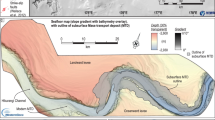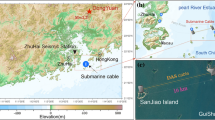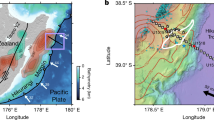Abstract
PRIOR to 1940, faults on submarine telephone cables between Great Britain and the Continent were normally located by direct-current methods employing a good wire in another cable. Confirmatory tests were usually made by the impedance-frequency method1. When the time came in 1944 to restore telephone communications, no good wires were available. The impedance-frequency method was employed for fault localization with great success, and at the same time confirmatory tests were made by direct-current methods which do not require a good wire, such as the tests due to Mance, Kennelly, Black2, etc. As all of these D.C. tests are affected by earth currents, the nature of this current phenomenon was investigated. The work in general was limited to periods when co-operation was being given to Post Office cable ships in restoring communications, and so the results obtained only cover a limited period ; but they are sufficiently consistent to be of interest.
Similar content being viewed by others
Article PDF
References
Palmer, W. T., and Jolly, E. H., Telephone Cable Testing, I.P.O.E.E. Paper 138.
Munro and Jamieson, "Pocket Book of Electrical Rules and Tables" (1927).
"Admiralty Navigation Manual", 1.
"Admiralty Atlas of Tides and Tidal Streams."
Author information
Authors and Affiliations
Rights and permissions
About this article
Cite this article
CHERRY, D., STOVOLD, A. Earth Currents in Short Submarine Cables. Nature 157, 766 (1946). https://doi.org/10.1038/157766a0
Issue date:
DOI: https://doi.org/10.1038/157766a0



